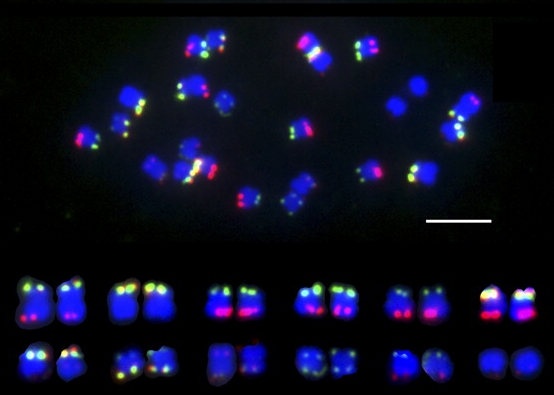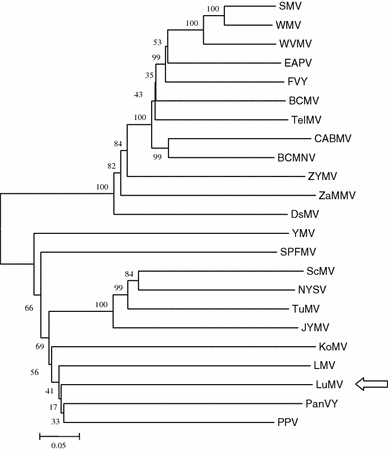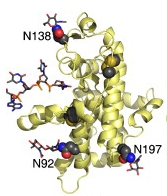First direct measurement of light absorption on individual light-harvesting complexes of fotosynthetic bacteria
Chlorosomes are specific light-harvesting complexes of photosynthetic bacteria, made of aggregated bacteriochlorophyll and other photosynthetic pigments. They are able to absorb and transfer light energy with high efficiency, enabling chlorosome-equipped bacteria to survive in dark places. Structure and function of chlorosomes have been investigated by several methods which however do not allow to uncover molecular level of chlorosome organisation sufficiently. Therefore, in this work the measurement of direct light absorption on single isolated chlorosomes were done for the first time. The heterogenous inner structure was revealed indicating that the results reported so far have been negatively influenced by this type of structural disorder. The work published is therefore significant for further experiments and understanding the principles of chlorosome functioning, too.
- Furumaki S., Vácha František, Habuchi S., Tsukatani Y., Bryant D.A., Vácha M.: Absorption Linear Dichroism Measured Directly on a Single Light-Harvesting System: The Role of Disorder in Chlorosomes of Green Photosynthetic Bacteria. Journal of the American Chemical Society 133(17): 6703-6710, 2011 [IF = 9.907]. -> Abstract / Full-text online

Characterization of repetitive DNA in complex genomes of the selected plant species
Repetitive DNA makes up significant portions of higher plant nuclear genomes. Therefore, investigation of sequence composition, genome organization and evolution of the repetitive DNA is crucial for our understanding of fundamental processes driving plant genome evolution and function, as well as for potential genetic manipulation in crop species. Taking advantage of the next-generation sequencing technologies, we performed detailed characterization of repetitive DNA in three complex plant genomes using a set of novel bioinformatics tools that have been previously developed in our laboratory. The data obtained for the model dioecious plant Silene latifolia, tobacco (Nicotiana tabacum) and potato (Solanum tuberosum) genomes provided new insights into the role of repetitive DNA in various evolutionary processes, including differentiation of plant sex chromosomes or polyploidization.
- Macas Jiří, Kejnovský E., Neumann Pavel, Novák Petr, Koblížková Andrea, Vyskot B.: Next Generation Sequencing-Based Analysis of Repetitive DNA in the Model Dioceous Plant Silene latifolia. PLoS ONE 6(11): e27335, 2011 [IF = 4.092]. -> Abstract / Full-text online
- Renny-Byfield S., Chester M., Kovarik A., Le Comber S.C., Grandbastien M.A., Deloger M., Nichols R., Macas Jiří, Novák Petr, Chase M.W., Leitch A.R.: Next generation sequencing reveals genome downsizing in allopolyploid Nicotiana tabacum, predominantly through the elimination of paternally derived repetitive DNAs. Molecular Biology and Evolution 28(10): 2843-2854, 2011 [IF = 5.55]. -> Abstract / Full-text online
- Torres G.A., Gong Z., Iovene M., Hirsch C.D., Buell C.R., Bryan G.J., Novák Petr, Macas Jiří, Jiang J.: Organization and evolution of subtelomeric satellite repeats in the potato genome. G3: Genes, Genomes, Genetics 1(2): 85-92, 2011 . -> Abstract / Full-text online
Examining the antiviral activity of tenofovir against Cauliflower mosaic virus and its metabolism in Brassica pekinensis plants
Antiviral effect of tenofovir - antivirotic developed by prof. A. Holý - onto model plant DNA virus Cauliflower mosaic virus was evaluated. Six to nine weeks after tenofovir treatment of infected Brassica pekinensis, virus was not detectable by any routine molecular methods used. Detailled study showed, that tenofovir in plants is acting like nucleotide - basic DNA element. Therefore, the principle of its effect on plant DNA viruses is apparently similar as in the case of animal viruses: tenofovir blocks reproduction of virus by incorporating itself into virus DNA when replicating.
- Špak Josef, Votruba I., Pavingerová Daniela, Holý A., Špaková Vlastimila, Petrzik Karel: Antiviral activity of tenofovir against Cauliflower mosaic virus and its metabolism in Brassica pekinensis plants. Antiviral Research 92: 378-381, 2011 [IF = 4.301]. -> Abstract / Full-text online
Structure of photosynthetic apparatus of brown alga Xanthonema debile
Using electron techniques we have determined and compared structure of the photosynthetic apparatus of brown algae X. debile. Structure of both photosystems I and II is similar to those of higher plants and green algae. New was the observation of the structure and aggregation light-harvesting antennae.
- Gardian Zdenko, Tichý J., Vácha František: Structure of PSI, PSII and antennae complexes from yellow-green alga Xanthonema debile. Photosynthesis Research 108(1): 25-32, 2011 [IF = 3.243]. -> Abstract / Full-text online

Analysis of the complete nucleotide sequence of a lupine potyvirus isolate
An RNA virus was discovered and isolated from the lupine plants showing mosaicism on the leaves. The genome of virus was sequenced and phylogenetic analyse suggested novel virus related with plum pox virus. Detailed analysis showed, that this virus can be regarded as a member of a newly described potyvirus species, for which the name Lupine mosaic virus (LuMV) is proposed.
- Sarkisova Tatiana, Petrzik Karel: Determination of the complete nucleotide sequence of a lupine potyvirus isolate from Czech Republic reveals that it belongs to a new member of the genus Potyvirus. Archives of Virology 156: 167-169, 2011 [IF = 2.111]. -> Abstract / Full-text online

Revealing the molecular structure and function of plant nuclease with anticancerogenic potential
Plant nuclease (protein cleaving nucleic acids, like DNA) TBN1from tomato has an anticancerogenic effects on human tumors. Using plant biotechnology, sufficient amount of TBN1 was prepared and crystallized. Crystalographic analysis revealed molecular structure of TBN1, enabling targeted modifications of this anticancerogenic compound and - thus - its better usability in human medicine.
- Dohnálek Jan, Kovaľ Tomáš, Lipovová P., Podzimek Tomáš, Matoušek Jaroslav: Structure analysis of group I plant nucleases. Journal of Synchrotron Radiation 18(1): 29-30, 2011 [IF = 2.726]. -> Abstract / Full-text online
- Kovaľ Tomáš, Lipovová P., Podzimek Tomáš, Matoušek Jaroslav, Dušková Jarmila, Skálová Tereza, Štěpánková Andrea, Hašek Jindřich, Dohnálek Jan: Crystallization of recombinant bifunctional nuclease TBN1 from tomato. Acta Crystallographica Section F 67(1): 124-128, 2011 [IF = 0.506]. -> Abstract / Full-text online
- Podzimek Tomáš, Matoušek Jaroslav, Lipovová P., Poučková P., Spiwok V., Šantrůček J.: Biochemical properties of three plant nucleases with anticancer potential. Plant Science 180(2): 343-351, 2011 [IF = 2.945]. -> Abstract / Full-text online
Finding the two plasmids existing in high copy numbers in phytoplasma cells
Presence and characteristic of phytoplasma plasmid are not known too much. Two plasmids associated with two strains of „Candidatus phytoplasma asteris“ have been obtained from two plant species. Both the plasmids were sequenced and six, or five open reading frames were found, respectively, each having nucleotide compossition very similar to phytoplasmas. Frutheremore, a segment of one of plasmids was almost identical to part of phytoplasma genome suggesting strongly, that such a plasmids are made somehow from phytoplasma genome.
- Petrzik Karel, Krawczyk K., Zwolinska A.: Two high-copy plasmids found in plants associated with strains of “Candidatus Phytoplasma asteris”. Plasmid 66: 122-127, 2011 [IF = 1.516]. -> Abstract / Full-text online
Preparation of capsid protein constructs from GFLV based on local isolates
Coat protein genes of grapevine fanleaf virus local strains isolated in South-Moravia, Czech Republic were sequenced, and artificial coat protein gene was designed and synthesized that retains typical sequence features of local strains but is free of mRNA destabilizing sequences. Three variants of the synthetic gene were cloned into Agrobacterium plant expression vector and their function was tested after potato protoplasts transformation, assaying transient mRNA and coat protein production. Vitis vinifera rootstock cultivars were transformed with Agrobacterium tumefaciens LBA4404 carrying vectors with variants of the synthetic gene, using the meristematic bulk tissue method.
- Vlasák Josef, Bříza Jindřich, Niedermeierová Hana, Pavingerová Dana, Eichmeier A., Baránek M., Pidra M.: GFLV coat protein constructs based on local isolates from the Czech Republic. African Journal of Biotechnology 11(5): 1133-1137, 2012 . -> Abstract / Full-text online


